Added 1 new A* page:Yesterday I got to talking about Beta Pictoris b, a planet around a star 63 light years from Earth that has actually been directly seen by our instruments, at least in the infrared. There is no doubt these days that planets are plentiful in our galaxy; says Wikipedia: "A 2012 study of gravitational microlensing data collected between 2002 and 2007 concludes the proportion of stars with planets is much higher and estimates an average of 1.6 planets orbiting between 0.5–10 AU per star in the Milky Way Galaxy, the authors of this study conclude 'that stars are orbited by planets as a rule, rather than the exception.'"
The vast majority of extrasolar planets thought to have been detected so far--767 candidates total, says The Extrasolar Planets Encyclopaedia; the Kepler satellite team, whose mission it is to find planets around other stars, had identified 2,321 *unconfirmed* candidates as of February of this year--have been hinted at only through indirect evidence: as perceived regular wobbles or flickers in their parent star, or the center of what appears to be light bending around a large mass. The very first confirmed exoplanet candidate, for instance, was a pulsar planet--that is, a planet orbiting a pulsar; a pulsar is a rapidly spinning neutron star whose polar jet beams toward us in its sweep, making for a very regular bright blinking light in the heavens; any interruption of variation in the timing of that blinking, due for instance to the gravitational influence of a large planet nearby, is relatively easy to spot, and this was accomplished in 1992, when the first not one but *two* extra-solar planets were deduced to be altering the timing of millisecond pulsar PSR 1257+12. Due to limitations of our planet-finding technology, most exoplanet candidates found to date lie within 300 light years of Earth--quite a tiny space considering the Milky Way is about 100,000 light years across (and contains 200 to 400 billion stars).
But while hundreds or thousands of planets around other stars in this small local region have been hinted at, only 31 planets in 27 systems have actually been seen. Like Beta Pictoris b, just about all of them are of the "hot Jupiter" variety: that is, very large gas giants heated to high temperatures by a very close proximity to their parent star; this proximity means an orbital period as low as just a few days, making them easier to spot as regular patterns, and the high mass and temperature makes them possible to pick out in infrared light even across tens or hundreds of light years of space. 1 to 1.5% of all "sunlike" stars are thought to have a "hot Jupiter." Current technology makes spotting smaller, colder planets--like Earth, say--much more difficult; heck, we can still barely even see anything of Pluto from Earth, much less spot any small cold planet 6,000 to 600,000 times further away (about 3 to 300 light years) than that.
Also complicating this picture is the question of just what is a planet? There are all sorts of arguments on the small side of things--tiny Pluto being famously declassified as a planet, for instance--but there is confusion on the big side, too, because tradition has it that a "planet" forms from an accretion disc around a star, while a "star" forms from a nebula, and that a "star" undergoes fusion, while a "planet" does not. But free-ranging, apparently non-star bodies have been spotted floating through star clusters, and are thought to be planet-like objects that formed directly from the nebula that birthed the rest of the cluster, rather than from an accretion disc around a star; and bodies reaching about 13 Jupiter masses--11, depending on who you ask and what exotic compositions you admit--are thought to be able to start a fusion reaction thanks to their gravitational pressure, which makes them not a planet but a brown dwarf *star*; brown dwarfs, however, actually only undergo fusion for a small part of their existence, typically--and it's fusion of deuterium (nucleus of 1 proton and 1 neutron), rather than of hydrogen (nucleus of 1 proton) like bigger stars.
So is a thing a planet or a star depending on where it is currently, or what it is doing? Well, kinda yeah. The last official ruling on this subject from the IAU ("International Astronomical Union," the Paris-based collection of just over 10,000 active astronomers, of doctorate level or higher, from across the globe who set the "rules" on such crucial semantic issues) came in 2003, and went as follows:
1) Objects with true masses below the limiting mass for thermonuclear fusion of deuterium (currently calculated to be 13 Jupiter masses for objects of solar metallicity) that orbit stars or stellar remnants are "planets" (no matter how they formed). The minimum mass required for an extrasolar object to be considered a planet should be the same as that used in our Solar System.
2) Substellar objects with true masses above the limiting mass for thermonuclear fusion of deuterium are "brown dwarfs", no matter how they formed nor where they are located.
3) Free-floating objects in young star clusters with masses below the limiting mass for thermonuclear fusion of deuterium are not "planets", but are "sub-brown dwarfs" (or whatever name is most appropriate). |
Oh dear, that doesn't entirely clear things up in all cases, does it?
So anyway I thought I would try compiling photos of all the sighted exoplanet candidates (from The Extrasolar Planets Encyclopaedia's list) I could find via simple text search on Wikipedia; I'll accompany these with the name, distance from Earth in light years, estimated mass in Jupiter masses ("MJ"?), and you'll see that a lot of these are in fact in danger of being classed as brown dwarfs rather than planets--and who cares about yet another dull ol' brown dwarf? :P Well, not that many of us care about "hot Jupiters" anyway, I suspect--we're all just waiting for a real Earth-like planet to be found that we--or our distant descendants, rather--can go and trash, yes? :D--but, you know, I like space photos of unusual subjects, so let's do this thing. We'll start with Beta Pictoris b, since I already have that one from yesterday:
Beta Pictoris b - 63 ly away, 8 MJ
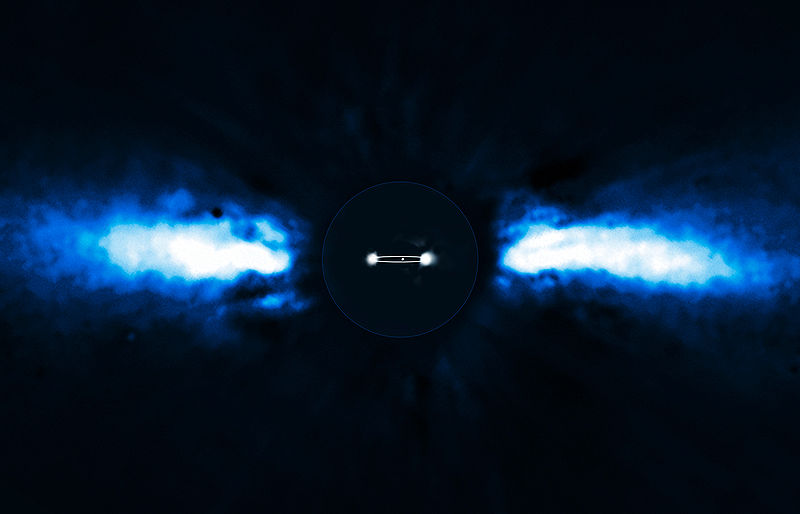
image by ESO/A.-M. Lagrange (source)
~~~~~
2M 1207 b - 172 ly away, 4 MJ
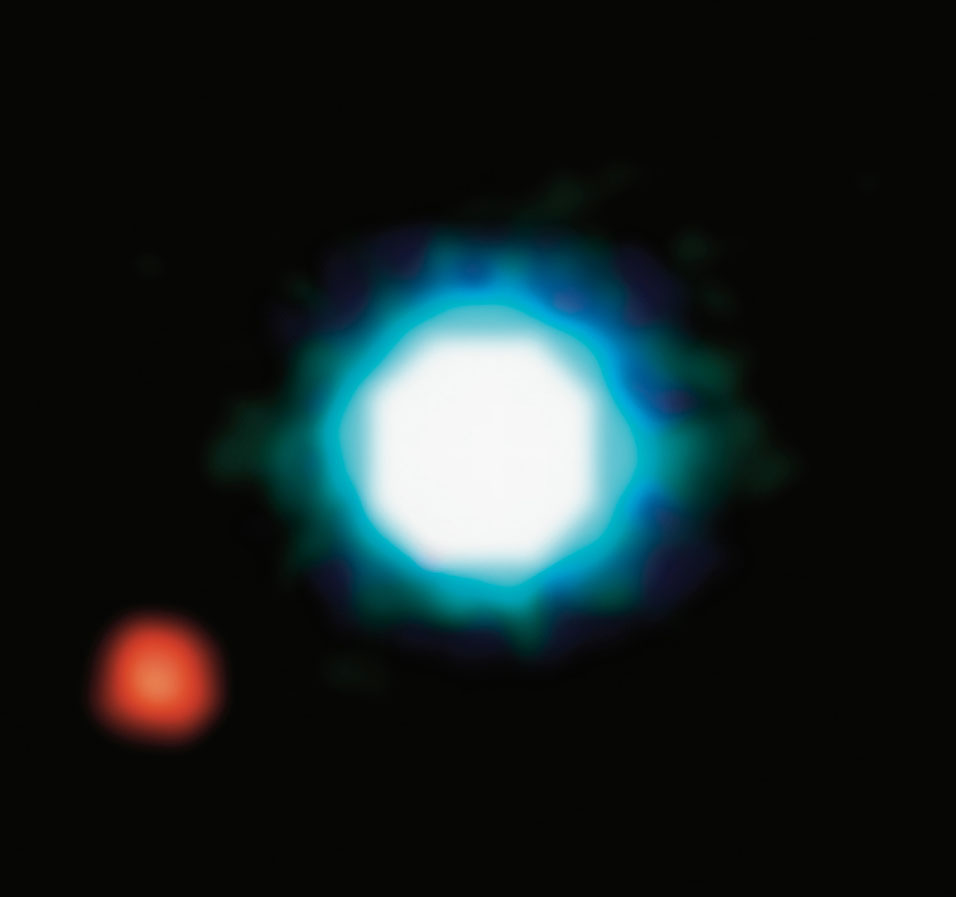
image by ESO (source)
The "planet" is the red dot, seen in orbit around its brown dwarf star in blue in this composite infrared image.
~~~~~
CHXR 73 b - distance unspecified, 12 MJ
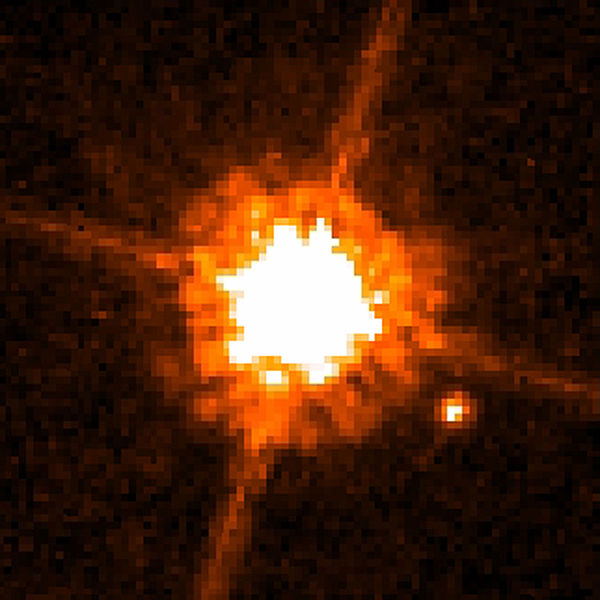
image by NASA/ESA/K. Luhman (Penn State University, USA) (source)
Hubble image from 2006, "0.1% chance" that the hot Jupiter is just a background object.
~~~~~
2M J044144 b - 450 ly away, 7.5 MJ
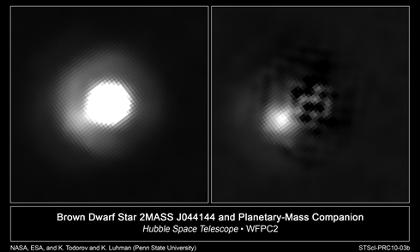
image by NASA (source)
Hubble image; "planet" orbits a brown dwarf less than three times its mass.
~~~~~~
AB Pictoris b - 148 ly away, 13.5 MJ
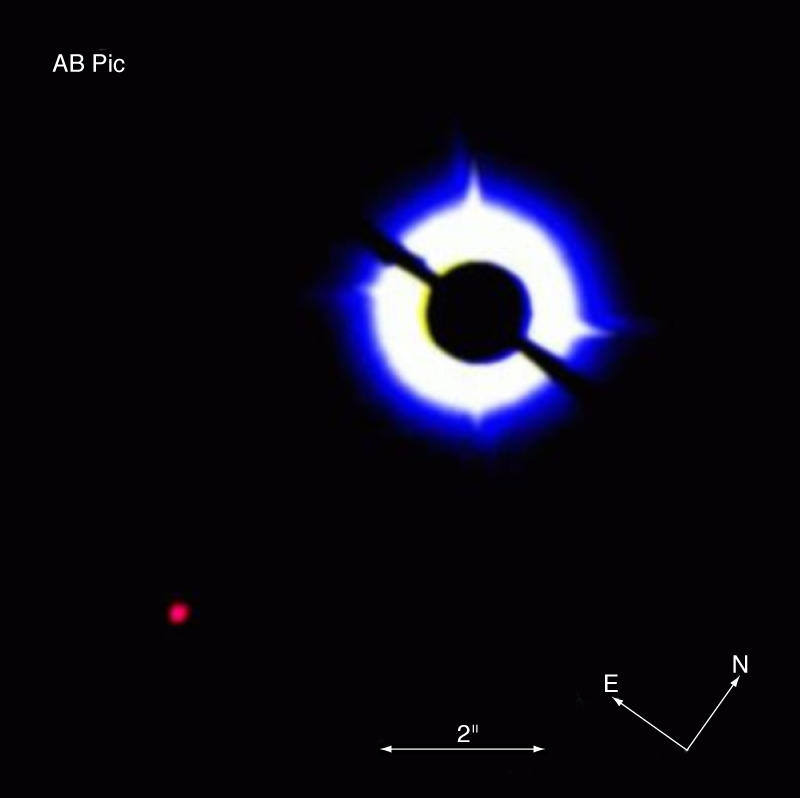
image by ESO (source)
~~~~~
GQ Lupi b - 500 ly away, 21.5 MJ
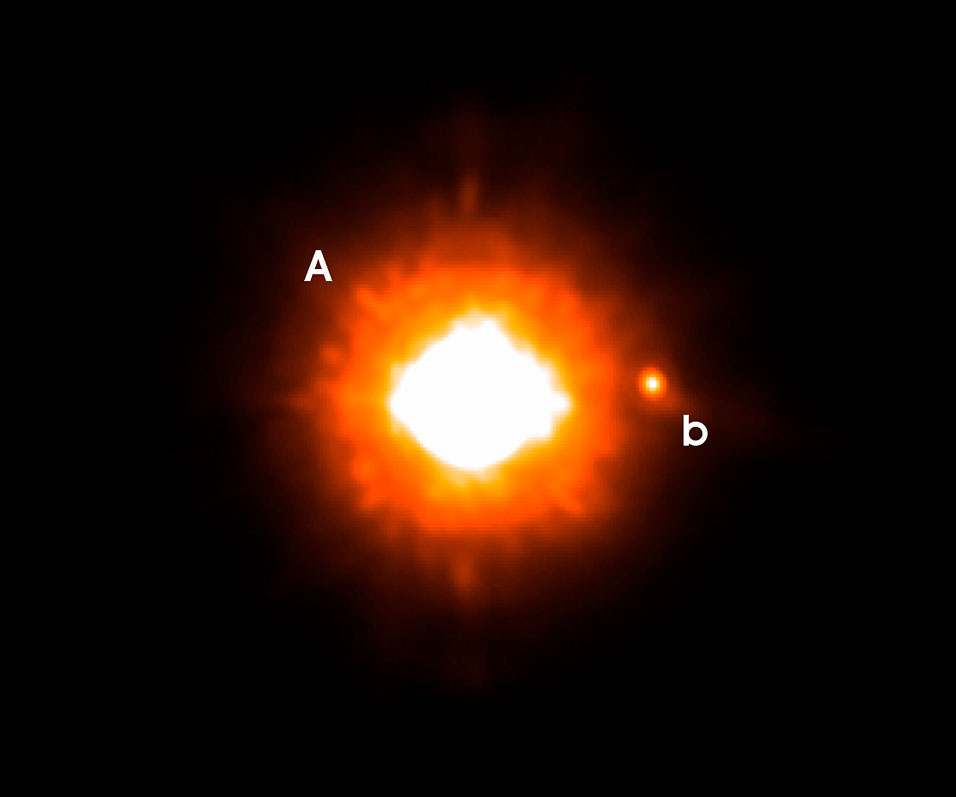
image by ESO (source)
~~~~~~
CFBDS 1458 b - 75.4 ly away, 6.5 MJ
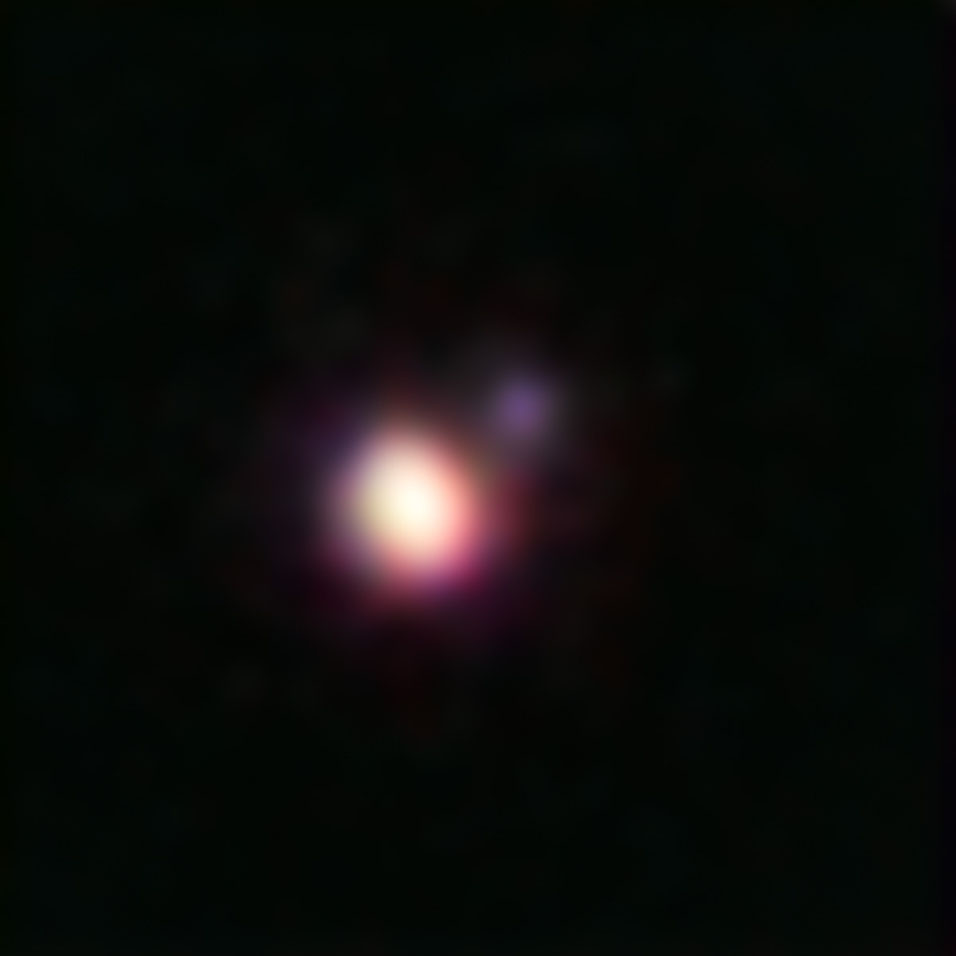
image by Michael Liu, University of Hawaii (source)
Since the planet is kind of dwarfy, this is actually a brown dwarf binary, apparently, although the planety one is one of the coolest (temperature) brown dwarfs known. The image is a near-infrared composite.
~~~~~~
HR 8799 e, d, c, b - 129 ly away, 9, 10, 10, 7 MJ
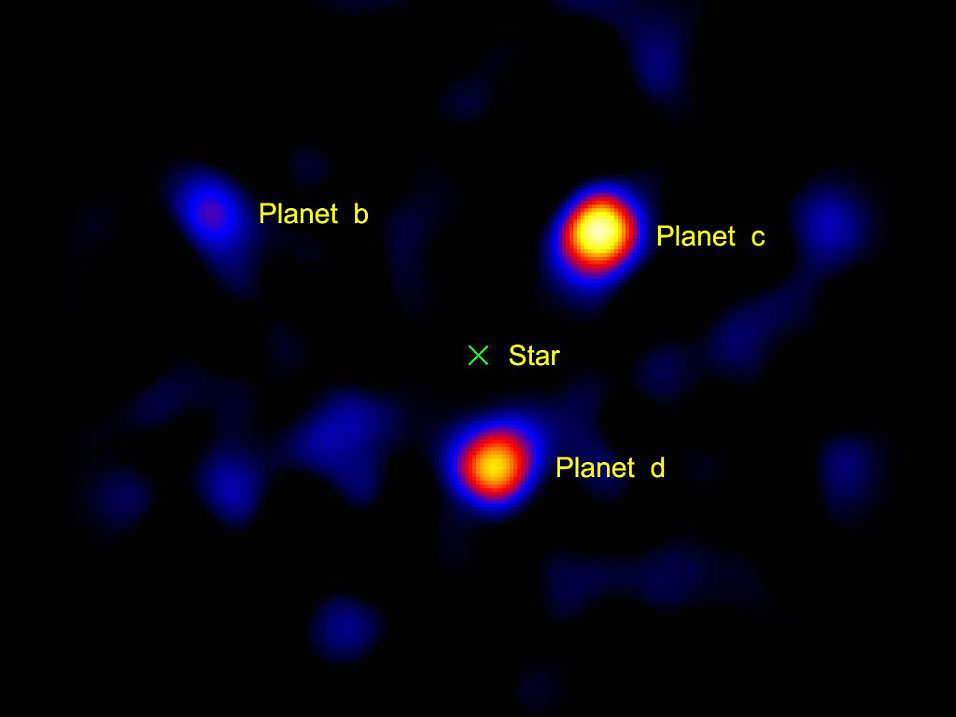
image by NASA/JPL-Caltech/Palomar Observatory (source)
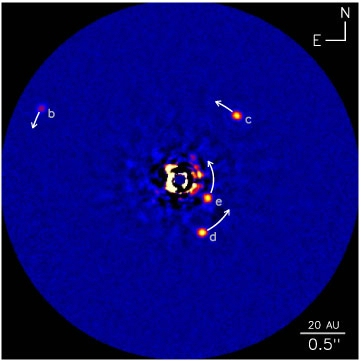
image by Ben Zuckerman (source)
That's four hot Jupiters spotted around a single star 1.5 times larger than the Sun; their orbital radii are "2 to 3 times those of Jupiter, Saturn, Uranus, and Neptune, respectively"; these were discovered in an order different than their order going outward from the star, thus the "e, d, c, b" arrangement of the names--oh man that kind of thing is gonna be really confusing later on :P; the planets are in the inner portion of one of the stellar largest debris discs known within 300 light years--it extends out about 1000 AU:
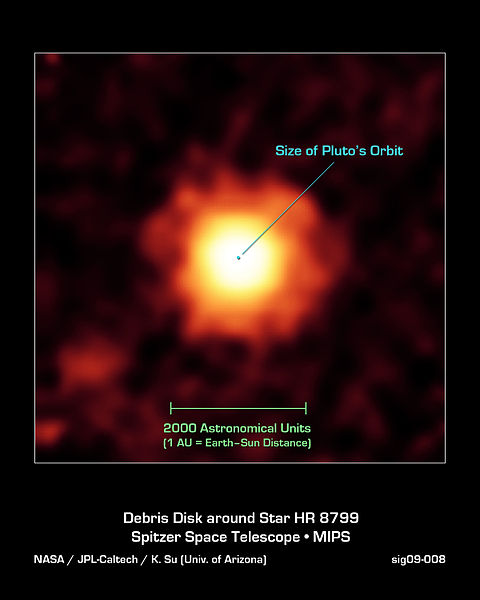
image by NASA (source)
~~~~~
Fomalhaut b - 25 ly away, < 3 MJ
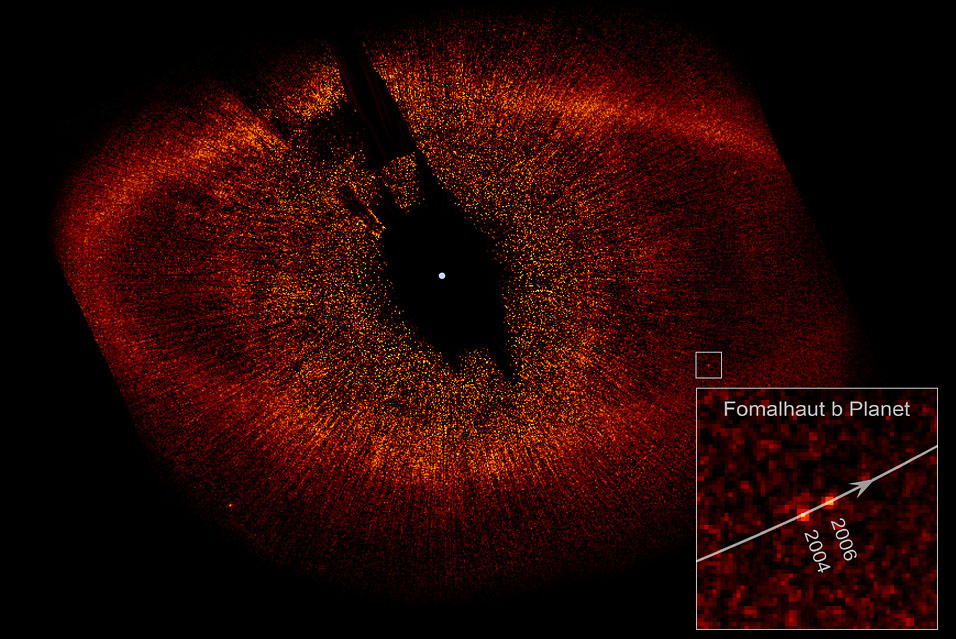
image by NASA, ESA, etc (source)
This planet is thought to orbit at 115 AU, just inside the inner edge of the star's debris disc. It was the first exoplanet whose position was spotted by irregularities in a debris disc (the disc isn't centered on the star, and the inner edge is unusually sharp), first imaged planet since Neptune whose existence was predicted prior to discovery, and the first spotted in visible light. It was spotted three times by Hubble, the third time--2010--it appeared in an unexpected spot that would require an elliptical path through the debris disc / dust belt, which wouldn't match its theorized effects on the debris--it appeared likely that a second planet outside the disc is keeping things in order; however, even b has not been spotted by another telescope--Spitzer looked for it in near-infrared but found nothing, which was a surprise, and led to suspicions that the thing spotted by Hubble may just have been a dust reflection. But the to-be-massive ALMA radio telescope array (which I talked about back in October) made Fomalhaut one of its first subjects of study, and just confirmed last month that the debris disc (the portion ALMA observed, anyway) has an unusually sharp edge both inside and outside--their observation is seen here superimposed on the Hubble observations in blue:
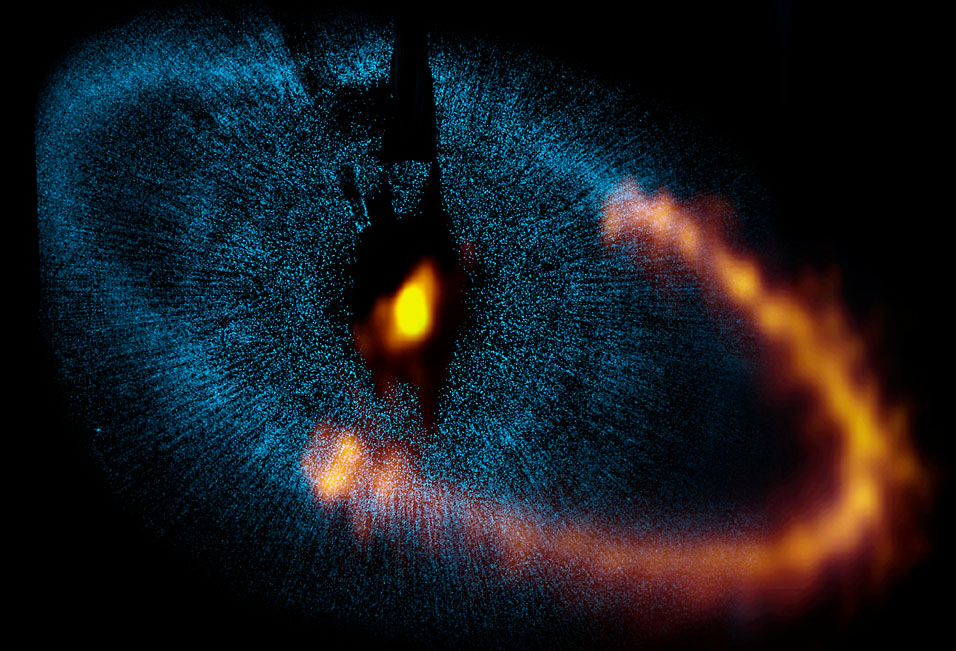
image by ALMA (ESO/NAOJ/NRAO). Visible light image: the NASA/ESA Hubble Space Telescope (source)
They also included a gorgeous general view of the star from the Digitized Sky Survey:
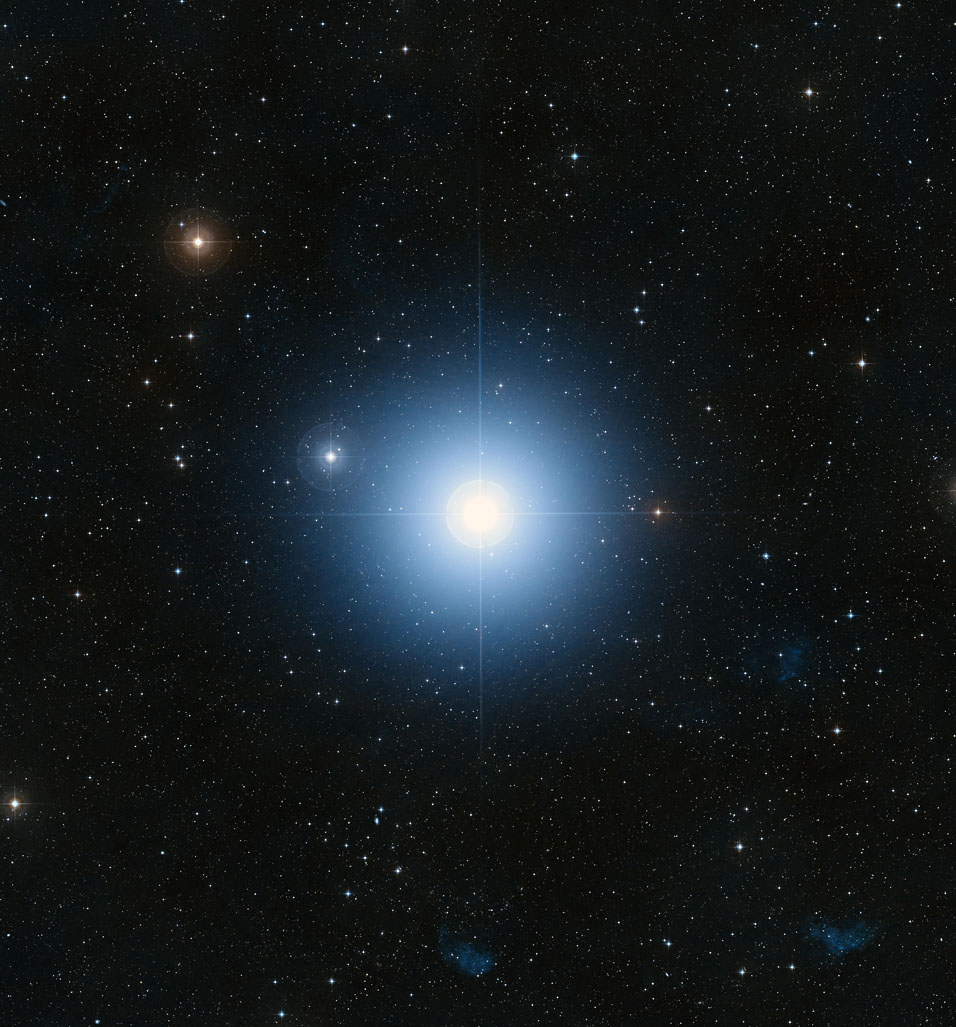
image by NASA, ESA, and the Digitized Sky Survey 2 (source)
and a diagram of what they think is going on there:
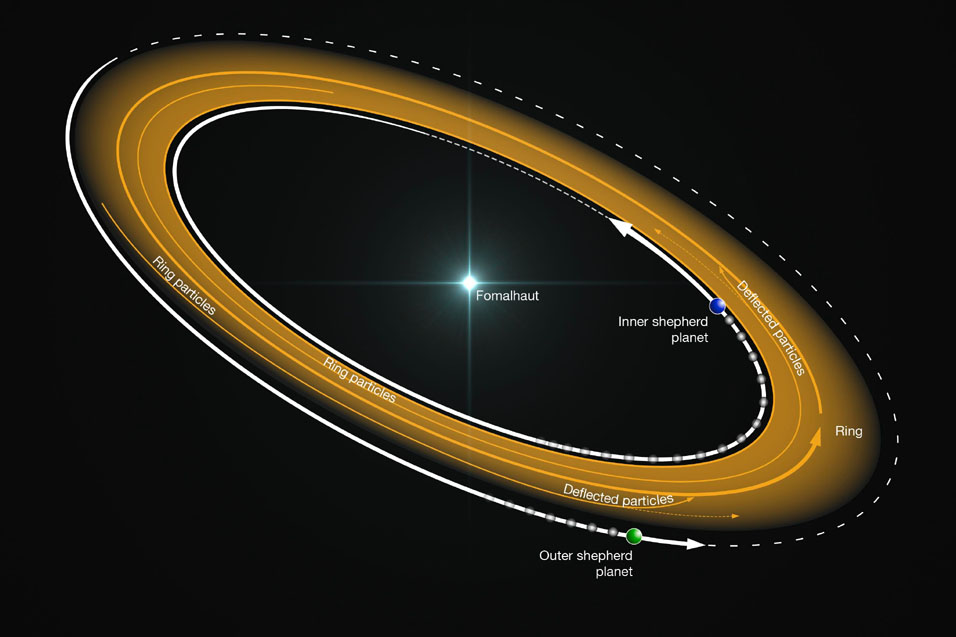
image by Bill Saxton/NRAO/AUI/NSF (source)
So was Fomalhaut b actually imaged? Well...probably?
Although the Encyclopedia's figure has Fomalhaut b at "less than three" Jupiter masses, ALMA's observations suggest a much, much smaller size range for both possible planets involved in sculpting the debris disc: between "Mars and a few times larger than Earth" masses; larger masses would have totally disrupted the dust belt.
~~~~~~~~~~~
That was all I could find on Wikipedia of the 31 imaged planets as far as actual images goes! I found a couple other images when I went so far as I peep into referenced scientific researched papers, but I guess those are copywritten and such, alas.
If you keep an eye on that Extrasolar Planets Encyclopedia, you'll notice the entries are constantly updating--it's a pretty hot field in astronomy now. I think I'm pretty much done with it, at least until we get a really good picture of an exoplanet, or hear of a really really exotic one (there's one Saturn-sized candidate that apparently orbits two stars--a low mass binary system; the planet is referred to as a "circumbinary"--for instance, but eh that wouldn't inspire me to write a news article, I don't think; hm and in my search for photos I found another, directly imaged circumbinary, Ross 458(AB) c (aka "DT Virginis c")), because otherwise we're just looking at little blobs and making all kinds of assumptions based on really, really slim data--the data given for the ones I did find on Wikipedia, for instance, varies so much from the Encyclopedia's list that it isn't even funny (I went with the Encyclopedia on the *assumption* that it is more up to date); and of course we won't get a good picture of one until we fly a probe to one, and even aside from the technical and economic challenge of building such a probe, it couldn't possibly get to one and beam back a photo within our lifetimes...hm so yeah, I don't have to cover exoplanets anymore, yay! :D Of course I don't expect much cessation in the bombardment of pop-sci articles touting a new "alien Earth" exoplanet discovery, complete with exceedingly lush, multi-mooned/starred artist's conception illustration, like a travel agent guidebook or something... Man I'm sick of those. :P
(Okay well one system that sounds kind of interesting in theory is KOI-55; it is now a helium-fusing "subdwarf" that will eventually collapse into a super-tiny, super-dense white dwarf, but it is thought that it was a red giant until about 18 million years ago; two or maybe three smaller-than-Earth-sized planets have been spotted (two imaged, but the photos must be copywritten or something :P) in extremely tight orbits around it--like they go around the star in a quarter or a third of an Earth day; they're the shortest-period planets found. "The two planets were most likely gas giants which spiraled inward toward their host star, which subsequently became a red giant, vaporizing much of the planets except for their rocky cores, which we today observe as terrestrial planets orbiting a sdB star.")
|
